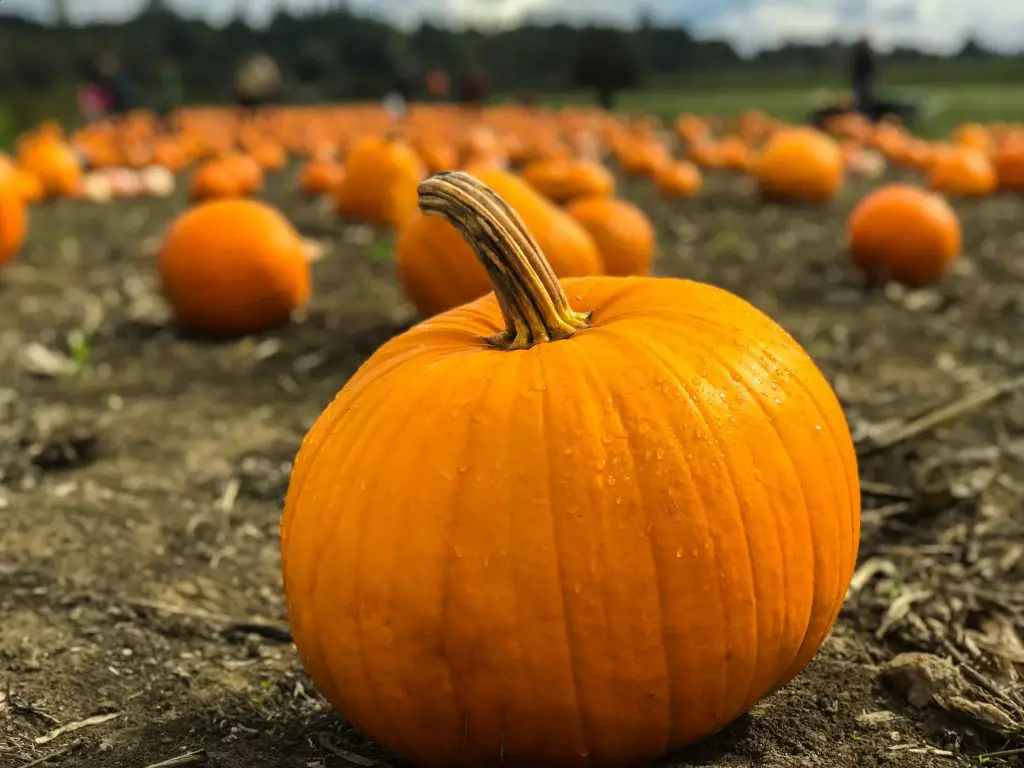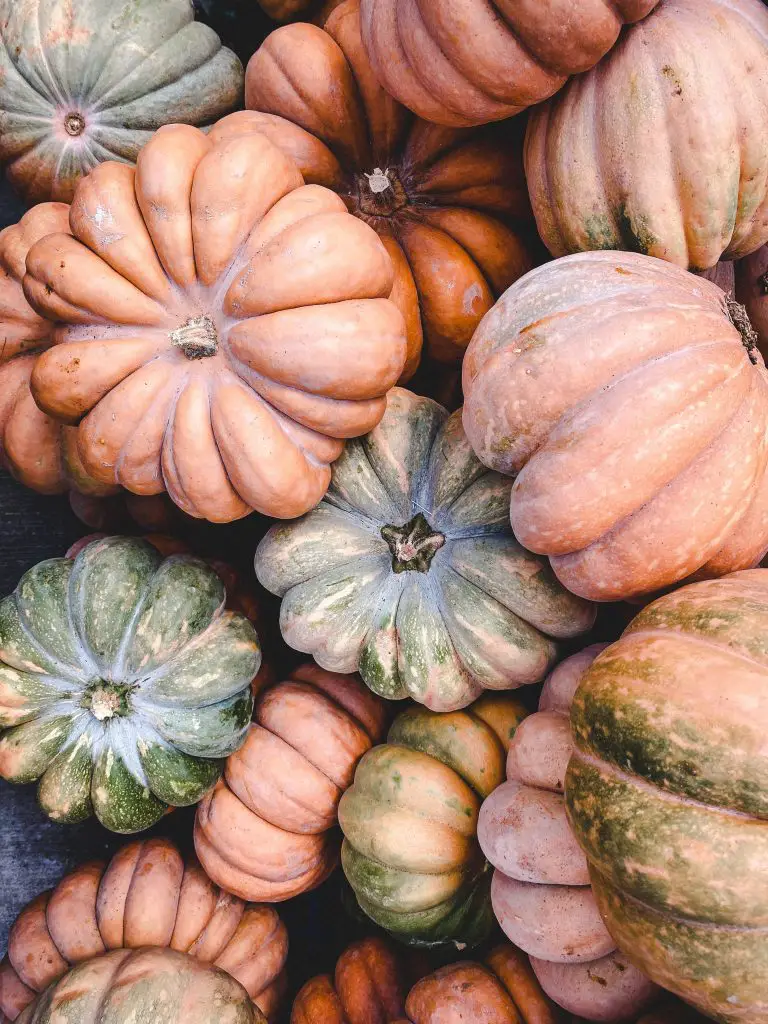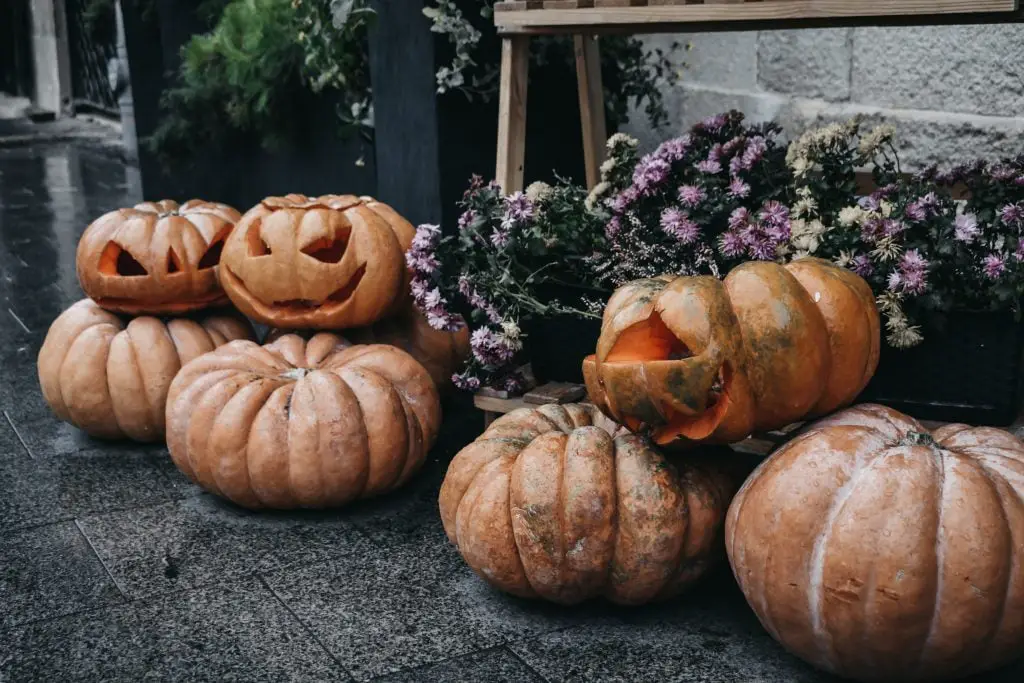How Much Space Do You Need Between Pumpkin Plants? Pumpkin plants are one of the easiest plants to grow for the home gardener. They can be grown from seed readily and the store well for several months through winter. These characteristics make it a high priority for many gardeners that want to become more self sufficient.
However, most varieties of pumpkin have extremely vigorous vines which can take up large volumes of space. This means that it is important to understand how much space you need between pumpkins and what effect different spacing has upon the yield of the pumpkin.
Suez Canal University conducted a study to assess the impact of spacing on the yield using pumpkins ranging in size from 0.6 kg (1.3 lbs) to 3.4 kg (7.5 lbs). The spacings ranged between 1 to 2 sqm per plant and the results allow clear recommendation to be made on what the optimum arrangement of pumpkin plants should be.
Pumpkins, that have medium to large fruit, should ideally be planted approximately 1 metre (a little over 3 ft) apart, as this optimises yield per square metre. Increasing the distance between plants will increase the size of fruit produced but not number produced per plant. The increase in fruit size does not offset the increased area used. Pumpkins with a fruit smaller than 1 kg (2.2 lbs) can be planted closer together than 1 metre.

Optimising The Yield of Pumpkins In Your Garden
The work by Suez Canal University in Egypt has indicated that the yield of pumpkins can be optimised not only by the spacing but also selection of the variety of pumpkin. Their work indicates that the yields per square metre can be increased if varieties selected produce relatively large fruit.
However, at this stage it is important to recognise that there will be practical limits to this for the home gardener. As a home gardener having too large a pumpkin can be problematic due to the reduced shelf life of a cut pumpkin. It is ideal to use the entire pumpkin in a go or at least in 2 meals rather than having half a pumpkin sitting around for a while then going off.
The other factors that effect the fruit size is the distance apart the Pumpkins are planted. In the results from the Suez Canal University study, which are provided in the table below, it shows that the reducing the distance between medium (Pro Gold F1) and large (Dickinson F1) Pumpkins from approximately 2 metres down to 1 metre reduces the size of the fruit by 45% and 15% respectively.
The authors largely attribute this to the reduced availability of nutrients which reduces the development of the fruit. However, in the case of the small variety tested, Frosty F1, the fruit size was largely unaffected by the change in the spacing of the plants.
I suspect that the reason for this is that the plants are generally smaller for this variety meaning that the plants at 1 metre apart they are not sufficiently close to each other to influence nutrient available. Presumably, planting progressively closer than metre would start to influence the fruit size at some point.
| Variety | Area Per Plant (Sqm) | Average Fruit Size (kg) | Yield Per Plant (Kg) | Kg per Sqm |
| Frosty F1 | 2.09 | 0.59 | 0.59 | 0.28 |
| Frosty F1 | 1.39 | 0.62 | 0.63 | 0.45 |
| Frosty F1 | 1.05 | 0.60 | 0.60 | 0.57 |
| Pro-Gold F1 | 2.09 | 0.21 | 2.10 | 1.00 |
| Pro-Gold F1 | 1.39 | 1.89 | 1.89 | 1.36 |
| Pro-Gold F1 | 1.05 | 1.44 | 1.44 | 1.37 |
| Dickinson F1 | 2.09 | 3.36 | 3.36 | 1.61 |
| Dickinson F1 | 1.39 | 3.23 | 3.23 | 2.32 |
| Dickinson F1 | 1.05 | 2.93 | 2.93 | 2.79 |
How Many Pumpkins Can One Plant Produce?
All the varieties tested in the Suez Canal University trial produced only one pumpkin per plant and generally the yield was really low compared to other trials I have seen. This is possible because the soils the trial was done in where relative sandy and the pH was also relatively high (over 8). Both of these factors are likely to have reduced the yield in this particular trial. To read more about pH click here.
Trials from several other sources indicate that between 1 and 5 pumpkins usually can be expected per plant with the total yield varying between 3 and 30 kg (6.6 to 66 lbs).
An excellent source of data is The Australia Vegetable Garden by Clive Blazey. The book covers a range of vegetables and provides a great deal of quantitative data to give a good idea of how to grow vegetables and how much you can expect to get. The table below covers several of the pumpkins tested.
| Variety | Days to Fruit | Fruit Size | No. of Fruit (kg) | Yield per Plant (kg) |
| Squash Sweet Mama F1 | 126 | 2.3 | 5.00 | 11.7 |
| Butternut | 119 | 1.5 | 2.20 | 3.4 |
| Jarradale | 131 | 4.6 | 3.50 | 16.1 |
| Queensland Blue | 152 | 6.2 | 3.25 | 20.3 |
| Australian Butter | 119 | 5.5 | 3.25 | 17.9 |
| Rouge vit d’Etampes | 96 | 7.4 | 1.00 | 7.4 |
| Bohemian | 119 | 5.1 | 1.80 | 9.2 |
| Iron Bark | 124 | 3.5 | 2.40 | 8.3 |
| Ebony Acorn | 126 | 1.8 | 18.10 | 32.6 |
| Pink Banana | 119 | 9.4 | 2.93 | 27.5 |
| Spaghetti Squash | 123 | 1.85 | 5.40 | 10.0 |
| Turk’s Turban | 114 | 5.9 | 3.10 | 18.3 |
Many of the varieties listed in the table above are available from the Diggers Club which is located in Australia. If you live in the US try Seeds Now or Thompson and Morgan in the UK, both companies have an extremely wide variety of seeds available. When purchasing seeds it is best to purchased Heirloom seeds rather than Hybrid seeds.
Heirloom seeds are old varieties of seeds that are “open pollinated” which means you can collect seeds for the following year. To learn more about the difference between Heirloom, Open Pollinated and Hybrid seeds click here.
How to Grow Pumpkin
Pumpkins are one of the easiest vegetables to grow as the seeds germinate readily and require little maintenance throughout the growing season. Pumpkins are frost tender plants that require warm conditions to thrive. In most regions the best time to sow seeds is in Spring.
Pumpkin seeds can be planted directly into the soil at a depth of 2 to 3 cms (1 inches) after the risk of frost has past. However, my preference is to start the seeds off early undercover in seeds trays. When planting seeds in trays it is best to use seed raising mix and plant 2 seeds per cell. The cells should be thinned to one plant, leaving the strongest seedling.

Seeds will generally germinate within a few days of planting but will typically take between 4 and 6 weeks to be large enough to be planted out in the garden. As pumpkin are susceptible to cool conditions and attack from slugs and snails it is advisable to protect the seedlings with row covers and snail pallets until the plants be come well established.
Pumpkins prefer a moist but well drained soil with plenty of organic matter. This is best achieved by using the no dig method, which is simple and easy to implement and it reduces the volume of work required to maintain the garden.
To prepare the soil using the no dig method simply apply a relatively thick layer of compost, 2 to 4 inches onto the surface and plant into the layer. The addition of the compost will act as a mulch while feeding the soil. To learn more about this method click here.
To maximise the output of your garden you may also consider planting Corn and Climbing Beans in the same space. This is an old Native American technique called the three sisters that takes advantage of the growing habit of each of the vegetables to increase the output. The Pumpkins act as a ground cover helping to maintain moisture in the soil while the beans increase the level of nitrogen in the soil and the corn provides a structure for the beans to climb onto.
Throughout the season it is important the ensure that the soil remains moist by regularly watering. When watering avoid wetting the leaves as Pumpkins are highly susceptible to powdery mildew which is a powdery white fungus that covers the leaves. This generally does not have a significant impact on the productivity of the plant but is a little unsightly. There are several home remedies that can be used to reduce the extent of the infection. To read more about this click here.

At the end of the season the foliage will begin to die back which is a signal that the fruits are approaching the point where they can be harvested. At this point the pumpkin will begin to change colour and the skin will toughen up. When harvesting make sure that you leave about 5 cm (2 inches of stem on the pumpkin and avoid damaging it.
The reason that this is important is because this is the point at which bacteria can enter the Pumpkin. Leaving the stem on prevents this from happening extending the shelf life of the Pumpkin. If the stem is accidently removed when harvesting use this Pumpkin first.
How to Store Pumpkins
Pumpkins are easy stored for up to 12 months in a cool dry area. This means that it is entirely possible to grow all the pumpkins you will ever eat in your own yard.
However, even if no attempt is made to protect the fruit, provided the stem on the Pumpkin remains intact, the pumpkins will still last for a very long time. I personally leave them on the back patio undercover for months without significant issues.
Other things I recommend is to lie the Pumpkin on its side in storage. The reason for this is it will prevent the pooling of water around the stork for an extended period of the time which can reduce shelf life.
Related Articles
Can I plant pumpkin seeds from a store brought pumpkin?
Why are my pumpkin leaves turning white?
How Many Pumpkins Are Produced Per Plant? And How Big Are They?
Do Pumpkins Grow Back Every Year?
Can Pumpkin Be Grown In A Pot? (And Here Is How To Do It)
Are Pumpkins Berries? If So, Why?

